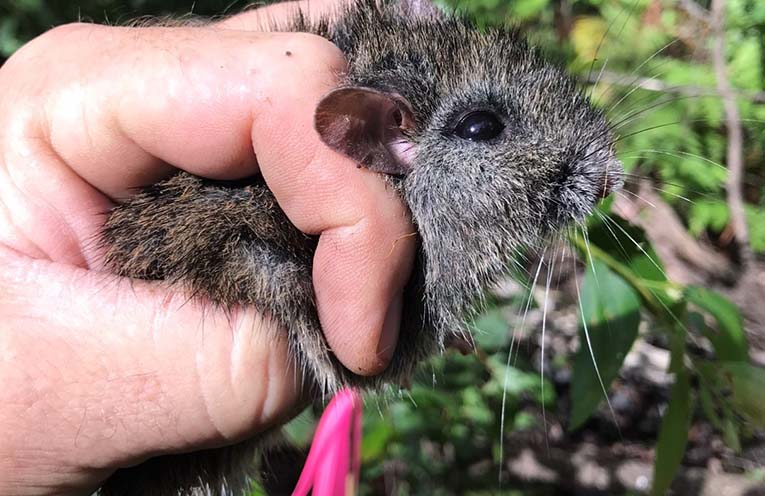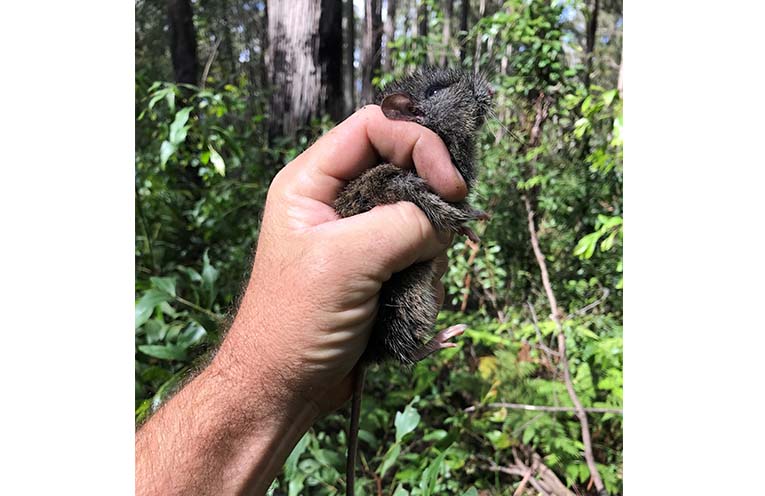
AN endangered native mouse species that nests in forests around the New South Wales Tablelands is showing strong signs of recovery post the Black Summer bushfires.
The Hastings River Mouse, Pseudomys oralis, a small rodent with brownish-grey fur and white feet, was one of New South Wales’ most severely impacted endangered species following the 2019-2020 fires.
 Advertise with News of The Area today.
Advertise with News of The Area today.It’s worth it for your business.
Message us.
Phone us – (02) 4981 8882.
Email us – media@newsofthearea.com.au
Researchers say an estimated 80 percent of its known habitat was burnt with such high severity that ecologists feared the worst.
However, ongoing monitoring centred around the Marengo State Forest, north-west of Dorrigo, has found populations have bounced back strongly.
Forestry Corporation ecologists believe there have been pleasing signs of increased numbers and recovery after successfully catching and releasing fourteen of the endangered mice over the past year at monitoring sites.
Field Ecologist Josh Brown said the Hastings River Mouse studies have involved the use of Elliott traps, which are designed for catch and release capture.
Based on the findings, monitoring of the endangered species will continue indefinitely.
“These high capture rates may be attributed to higher-than-average rainfall within the past three years,” Mr Brown said.
“Generally, we have seen fluctuations in Hasting River Mouse capture rates, but we were ecstatic to receive such high captures this year,” he said.
NSW Primary Industries Principal Research Scientist Dr Brad Law said only moderate numbers were caught in 2012 and again in 2014.
“The species had been in decline with increasingly dry conditions since the official monitoring started in 2015, leading up to the Black Summer bushfires that burnt a significant portion of their range,” Dr Law said.
“Continued annual monitoring (was undertaken) after the fires and several years of high rainfall revealed a bounce back in numbers at several sites this year,” he said.
DPI and the DPE is set to start a new collaborative study program of the Hastings River Mouse populations, funded by the NSW Environmental Trust.
For the first-time this study will see the species GPS-tracked to look at their fine-scale response to hazard reduction burns.
Previously, researchers knew the Hastings River Mouse could withstand mosaic and low intensity burns, which promote grass growth over shrubby forest floors.
What researchers haven’t known until now is how the species reacts to high intensity fire events such as the Black Summer bushfires.
The Hastings River Mouse is about 15-centimetres long and has a strongly rounded snout.
Typically, it has a white furred underbelly and large bulging eyes, which are surrounded by a black eye-ring.
This endangered species spans the Great Dividing Range from the Hunter Valley, south of Mount Royal and north to the Bunya Mountains near Kingaroy in south-east Queensland, living at elevations between 300 metres and 1100 metres.
It lives in a variety of dry, open forests with dense, low ground cover, relying on rocky outcrops and fallen logs for shelter while nesting in gullies and on ridges and slopes.
The Hastings River Mouse relies on a diet of native seeds, leaves and fungi.
